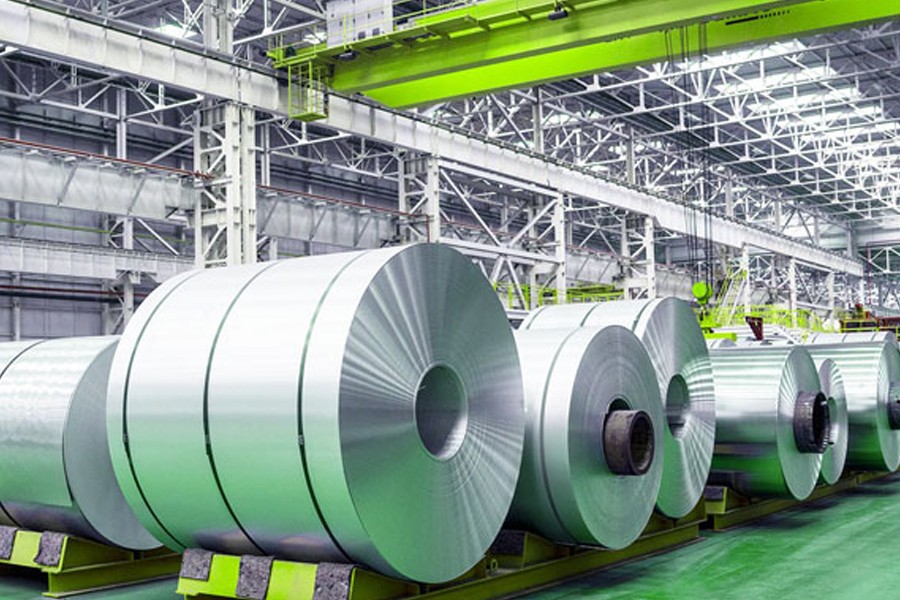
New green steel firms could reap rewards as EU carbon tariffs loom
Monday, 11 November 2024

SINGAPORE, Nov 10 (Reuters): On Thailand's eastern coast, plans are underway to build an electric arc furnace that will deliver green steel to Europe and benefit from contentious new rules that will force buyers to pay tariffs on high-carbon imports.
Governments and industry associations in Asia have lobbied ferociously against Europe's Carbon Border Adjustment Mechanism (CBAM) and it could cast a shadow over COP29 climate talks in Baku, Azerbaijan, next week, with China and others calling for an end to green trade barriers.
CBAM was designed to stop European firms evading carbon compliance costs by sourcing commodities from regions with laxer environmental rules. Formally launched in 2023 as part of the European Green Deal, it will force importers to buy credits to cover the emissions of the steel, aluminium, cement, electricity and chemicals they buy from outside the EU.
From 2026, CBAM will start imposing levies on steel production, a sector responsible for around 7% of global carbon dioxide emissions, and the levies will be fully phased in by 2034.
But while CBAM might price some manufacturers out of Europe, it will make cleaner but costlier technologies more competitive and open up the market for firms like Meranti Green Steel, which is building the Thai plant.
"We see (CBAM) as an opportunity," Meranti's chief executive Sebastian Langendorf told Reuters. "We do believe that new, focused green steel players have an advantage: we have no CO2 legacy."
The EU imported 16 million tons of finished steel products from Asia in 2023, with mills from South Korea, Japan, Taiwan, China, India and Turkey competing in a highly price-sensitive market.
CBAM has helped turn low-carbon production into a "market differentiator", said Antonio Della Pelle, senior operations manager at the World Bank's International Finance Corporation, which is investing $60 million in a green steel plant in Indonesia.
TWO-TIER MARKET
Singapore-headquartered Meranti is investing $2 billion in a 2.5 million metric ton-per-annum electric arc furnace in the Thai city of Rayong that will start producing greener steel in 2028.
Up to 70% of its products will be exported to Europe in the first phase, and it has already signed six EU-focused offtake agreements, Langendorf said.
Emissions at the plant are expected to stand at around 600 kg per ton of steel, significantly lower than the 2,000 kg from coal-fired blast furnaces. Using current carbon prices, that could represent a 100 euro ($107.80) difference per ton of steel in the CBAM levy.
Meranti expects to take advantage of a European green steel supply gap likely to exceed 20 million tons by 2030 - as well as a green premium as high as $300 per ton - with rising carbon costs forcing old European blast furnaces to close.
Established players are also ramping up their green steel capabilities, including Indian steelmaker JSW, which is planning a 4 million ton per annum plant at Salav on the country's western coast.
"Obviously the CBAM and carbon tax regulations that are coming elsewhere are accelerating our decisions," said Prabodha Acharya, JSW's chief sustainability officer.
Once CBAM tariffs hit their maximum in 2034, JSW aims to produce all its exports to the EU in furnaces powered by renewables and using recycled scrap as feedstock, he said.
But unlike Meranti, only a small proportion of JSW's total output will be produced by lower-emission plants, and critics warn CBAM is creating a "two-tier market" allowing giant mills to produce green steel for Europe and dirty steel for everyone else.
Proponents of CBAM argued that as well as tackling carbon leakage, it would also help encourage the decarbonisation of industries abroad, but under a two-tier market, firms could game the system, building only a limited amount of green capacity merely to serve Europe.
The two-tier loophole would narrow once CBAM-type regimes are introduced elsewhere. Britain is already set to implement its own carbon tariff mechanism in 2027, and Australia, Canada and the United States are considering similar moves.
The EU has also promised to assess the impact and extent of such "resource shuffling" in a review of CBAM to be delivered to the European parliament before January 2028.
TAKING ACTION
Though countries continue to complain about CBAM, they are also taking action to minimise its impact and even benefit from it.
According to a Reuters analysis of Global Energy Monitor (GEM) data, China now has 18 electric arc furnaces (EAFs) under construction, with total additional capacity of 18 million tons. Most are replacing higher-carbon plants, including blast furnaces. Two will be powered entirely by solar panels. By contrast, South Korea is building one, and Japan none, which could explain why steelmakers from the two countries have been more vocal in their opposition to CBAM, according to InfluenceMap, an organisation that tracks lobbying activity.